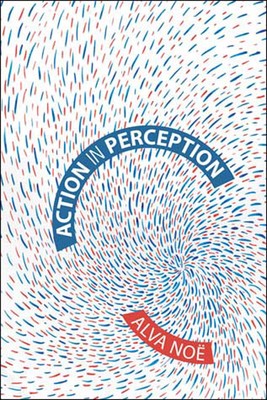
- We will send in 10–14 business days.
- Author: Alva Noë
- Publisher: Bradford Book
- ISBN-10: 0262640635
- ISBN-13: 9780262640633
- Format: 15 x 21.5 x 1.4 cm, minkšti viršeliai
- Language: English
- SAVE -10% with code: EXTRA
Reviews
Description
Perception is not something that happens to us, or in us, writes Alva Noë. It is something we do. In Action in Perception, Noë argues that perception and perceptual consciousness depend on capacities for action and thought--that perception is a kind of thoughtful activity. Touch, not vision, should be our model for perception. Perception is not a process in the brain, but a kind of skillful activity of the body as a whole. We enact our perceptual experience.
To perceive, according to this enactive approach to perception, is not merely to have sensations; it is to have sensations that we understand. In Action in Perception, Noë investigates the forms this understanding can take. He begins by arguing, on both phenomenological and empirical grounds, that the content of perception is not like the content of a picture; the world is not given to consciousness all at once but is gained gradually by active inquiry and exploration. Noë then argues that perceptual experience acquires content thanks to our possession and exercise of practical bodily knowledge, and examines, among other topics, the problems posed by spatial content and the experience of color. He considers the perspectival aspect of the representational content of experience and assesses the place of thought and understanding in experience. Finally, he explores the implications of the enactive approach for our understanding of the neuroscience of perception.
EXTRA 10 % discount with code: EXTRA
The promotion ends in 23d.13:04:57
The discount code is valid when purchasing from 10 €. Discounts do not stack.
- Author: Alva Noë
- Publisher: Bradford Book
- ISBN-10: 0262640635
- ISBN-13: 9780262640633
- Format: 15 x 21.5 x 1.4 cm, minkšti viršeliai
- Language: English English
Perception is not something that happens to us, or in us, writes Alva Noë. It is something we do. In Action in Perception, Noë argues that perception and perceptual consciousness depend on capacities for action and thought--that perception is a kind of thoughtful activity. Touch, not vision, should be our model for perception. Perception is not a process in the brain, but a kind of skillful activity of the body as a whole. We enact our perceptual experience.
To perceive, according to this enactive approach to perception, is not merely to have sensations; it is to have sensations that we understand. In Action in Perception, Noë investigates the forms this understanding can take. He begins by arguing, on both phenomenological and empirical grounds, that the content of perception is not like the content of a picture; the world is not given to consciousness all at once but is gained gradually by active inquiry and exploration. Noë then argues that perceptual experience acquires content thanks to our possession and exercise of practical bodily knowledge, and examines, among other topics, the problems posed by spatial content and the experience of color. He considers the perspectival aspect of the representational content of experience and assesses the place of thought and understanding in experience. Finally, he explores the implications of the enactive approach for our understanding of the neuroscience of perception.


Reviews